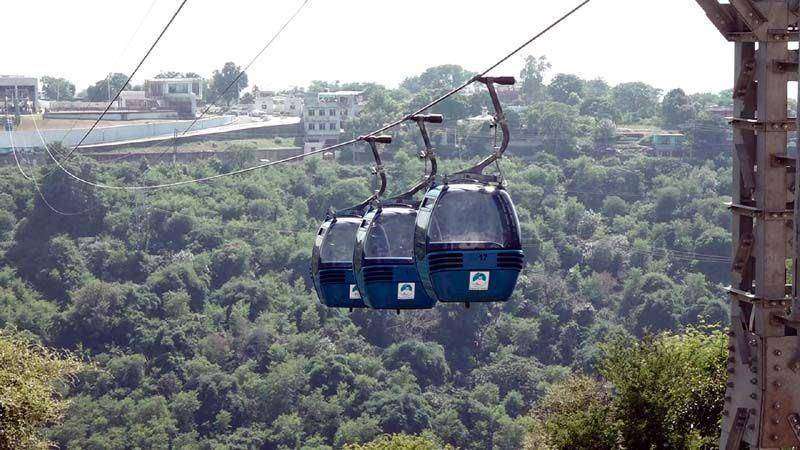The commercial operations on much-awaited ropeway service from Bahu Fort temple to Mahamaya temple that became a reality in July this year have started. The project that was inaugurated by former Lt Governor GC Murmu in July could not take off due to outbreak of Covid-19.
Earlier the project was to be operated from Bahu Fort to Mubarak Mandi complex but when the Mubarak Mandi and Bahu Fort were declared as protected monuments then the project was relocated. The total cost of the project was 75-crore rupees. According to the Tourism Department of J&K, all major facilities like restaurants, walkways, parks, and parking have been developed at the ropeway so that the tourist doesn’t face any kind of problem.
A senior officer of the Tourism Department said “the ropeway service will boost the pilgrimage tourism in J&K as the ropeway connects three famous temples including Jamvant Gufa Peerkho, Mahamaya Temple, and Bahu Fort Temple.
The 25-year old project comprises two sections first from Bahu Fort Temple to Mahamaya Temple and second from Mahamaya Temple to Peerkho Temple over the river Tawi with a total height of 1,118 meters. Jammu Cable Car Corporation (JKCCC) executed the project and in June 2015, its formal construction began.
Former Chief Minister of J&K Omar Abdullah in 2014 laid the foundation stone of the project. On 27 July 2020, former LG of J&K GC Murmu formally integrated it but due to the Corona outbreak, the commercial operation got delayed. This is the fourth ropeway project in the UT, the first one was commissioned in Gulmarg, Kashmir in 1988.
The ropeway services have only started for the first phase while working on the second phase from Mahamaya to Peer Kho is in its final stage and will be thrown open to the general public by the last week of November or the first week of December. Project Manager Rakesh Bhat said, “devotees from all over India visit these holy places and the ropeway will boost the tourism industry and it will also save time”. The ropeway authorities are following all the corona preventive measures like social distancing, sanitizing cabins before and after the rides, no entry without masks and regular body temperature check-up of workers and passengers” he added.
The locals who operate shops around these temples are very happy as the ropeway will increase the footfall and they will have the opportunity to earn more.
The government has proposed Rs 300 per person for the ride but for the first two weeks, Rs 100 will be charged per person. During the inauguration in July, former LG GC Murmu had directed the authorities to keep the ride free of cost for the general public for the first 15 days of the operation.
The government has also decided to provide rate concession to students and senior citizens but the ropeway authorities denied it. The locals of Jammu were happy on the first day of service. Several people from different parts of Jammu Visited Bahu Fort to enjoy the cable car ride. The locals expressed that the ropeway service will boost tourism in Jammu.
A senior official associated with the project said “the ropeway project would go a long way in promoting tourism in Jammu, giving a boost to the local economy by creating employment. The ropeway project is of great importance for the Jammu region and is going to be one of the biggest tourist attractions in the coming days”.
Another senior officer from the ropeway authorities said that “the former LG was personally monitoring the status of the service and the project was open for the general public. The LG has instructed us to immediately complete the remaining work of the ropeway and make it operational for the public” he added.
In April 2019 the JKCCC had successfully conducted the trial of the first phase. The cable car project is 1.66 km long and the ropeway has 8 cabins from Babu Fort to Mahamaya and 14 cabins from Mahamaya to Peer Kho. The total towers in both the sections are nine and all the critical components used in the ropeway service are imported. The authorities have adopted all the standard operating procedures as per the International standards. Till now 95 percent of the total cost has been incurred. The government is also planning to construct a gaming zone for kids along the ropeway.
An online ticket facility has been established but currently, all the ticket work is done manually. Once the rush increases online ticket booking facilities will come into action.
